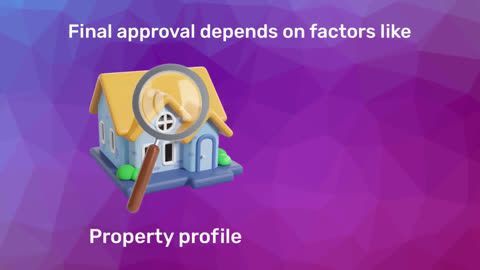When you hear the term "BPS," you might know it stands for Basis Points. But what is BPS exactly? Basis points are a unit of measurement used in finance to describe changes in interest rates, stock prices, and other percentages. One basis point is equal to one-hundredth of a percentage point. So, if an interest rate changes from 2.00% to 2.25%, it has increased by 25 basis points.
Key takeaways
A basis point (also called BPS or bip) is used in finance to describe small percentage changes in values like interest rates or returns.
1 basis point equals 0.01% or 0.0001 in decimal format.
100 basis points make up 1%.
To turn basis points into a percentage, divide the number by 100.
To figure out how many basis points a percentage represents, multiply the percentage by 100.
Basis points are useful in making percentage changes clearer and more precise.
They are widely used in banking, investing, and trading to describe movements in rates or yields.
They help avoid confusion between absolute and relative percentage changes.
Investors, analysts, and financial experts prefer basis points for consistent communication.
Understanding basis points is essential for anyone involved in finance or investing. They provide a clear way to discuss changes in interest rates without confusion. For example, when talking about a home loan, if a lender raises the interest rate by 50 BPS, it means the rate has increased by 0.50%.
What are basis points?
Basis points are widely used in finance to show changes in interest rates, returns, and yields. To get a sense of how they work, let’s look at an example: In May 2023, the Federal Open Market Committee raised the benchmark interest rate by 25 basis points (0.25 percentage points), bringing it up to a range between 5% and 5.25%. This made borrowing more expensive for banks and, in turn, for consumers.
In the bond market, changes in bond yields are also measured in basis points. If the yield on a bond increases from 7.45% to 7.65%, we say it went up by 20 basis points. This method avoids confusion. For instance, if someone says a bond’s yield went from 10% up by 5%, it could mean either 15% (an absolute increase) or 10.5% (a relative increase of 5% of 10%). That ambiguity can lead to misinterpretation.
Eliminating ambiguity
Since 1 basis point equals exactly 0.01%, it offers a reliable and clear way to express changes in financial figures. For instance, a bond yield rising from 10% to 10.5% is a 50 basis point increase. If it rose to 15%, that would be 500 basis points. Using BPS ensures everyone understands the exact change, avoiding any misunderstanding about whether a figure is absolute or relative.
While basis points are most common when talking about interest rates and bond yields, they are also useful in tracking the performance of other assets like shares. Let’s say a stock index increased by 134 basis points over a day. That would mean it went up by 1.34%. Describing the movement in basis points is clearer, especially when dealing with small but important changes in financial values.
Basis points and the equivalent percentage
Here’s a simple comparison of how basis points relate to percentages. Use this to understand common conversions:
Basis Points |
Percentage |
1 |
0.01% |
10 |
0.1% |
50 |
0.5% |
100 |
1% |
1,000 |
10% |
10,000 |
100% |
This table can help when quickly interpreting or converting financial data between basis points and percentage figures.
Converting basis points to percentages
To convert basis points into a percentage, just divide the number by 100. For instance:
384 basis points ÷ 100 = 3.84%
You can also use this method:
384 basis points × 0.0001 = 0.0384
0.0384 × 100 = 3.84%
This works in reverse too. To convert a percentage into basis points, multiply by 100:
2.42% × 100 = 242 basis points
Alternatively:
2.42% ÷ 100 = 0.0242
0.0242 ÷ 0.0001 = 242 basis points
This makes it simple to switch between percentages and BPS depending on how the data is presented.
Example of basis points calculation
Let’s say you invest in a government bond with an interest rate of 12.50%. A few months later, the rate drops to 12.25%. The change is 0.25%.
To convert this into basis points:
0.25% × 100 = 25 basis points
This means the interest rate fell by 25 BPS. Using basis points makes it easier to explain such small differences clearly, especially in professional financial discussions.
What percentage points does 75 basis points equal?
75 basis points are equal to 0.75%. To convert basis points into percentage form, simply divide by 100:
75 ÷ 100 = 0.75%
So, if an interest rate increased by 75 basis points, it rose by 0.75%. This kind of conversion helps avoid confusion in financial communication, especially when discussing rate changes, yields, or returns.
Conversion between basis points and percentage
You don’t need a chart to convert between basis points and percentages. Just remember these basic methods:
Basis points to percentage – divide the number by 100
(e.g., 150 BPS = 150 ÷ 100 = 1.5%)
Percentage to basis points – multiply the percentage by 100
(e.g., 2.5% = 2.5 × 100 = 250 BPS)
This simple rule helps you switch between the two formats easily and is useful for analysing interest rates, loan offers, and investment returns.
How much is 50 basis points?
50 basis points are the same as 0.5%. For example, if interest rates go from 4.75% to 5.25%, that is a 0.5% increase. Expressed in basis points, this would be described as a 50 BPS rise. This kind of expression is common in financial news and helps provide clarity when discussing small changes in rates or returns.
What is 20 basis points?
20 basis points equal 0.2%. If a bond yield falls from 7.65% to 7.45%, that’s a drop of 20 basis points. It’s often more accurate to describe such changes in BPS, especially in finance, because even small percentage changes can have a big impact on investments or borrowing costs.
Why are basis points important?
Basis points are crucial for several reasons:
1. Clarity: Using basis points helps eliminate ambiguity when discussing small percentage changes. Instead of saying "the interest rate increased by 0.25%," you can simply say "the rate increased by 25 basis points." This makes it clearer and easier to understand.
2. Precision: In finance, small changes can have a significant impact. A change of just a few basis points can affect how much you pay on a home loan or the returns on an investment.
3. Common language: Investors, financial analysts, and bankers frequently use basis points. Using this standard measurement allows everyone in the financial sector to communicate effectively.
How are basis points used?
In interest rates:
One of the most common uses of basis points is in interest rates. For example, central banks may adjust interest rates to control inflation or stimulate the economy. When a central bank raises interest rates by 25 basis points, it is making borrowing more expensive.
If you have a home loan with a variable interest rate, even a small change in basis points can affect your monthly payment. For instance, if your loan amount is Rs. 10 lakh and the interest rate increases by 50 BPS, your monthly EMI may rise slightly. This can impact your overall financial planning.
When central banks adjust rates, it directly impacts home loan interest rates across the market. Smart homebuyers monitor these changes to time their property purchases effectively. If you're considering a home loan, Bajaj Finserv offers flexible options with tenure up to 32 years and approval within 48 hours*. Check your loan eligibility now to lock in competitive rates before they change. You may already be eligible, find out by entering your mobile number and OTP.
In investment returns:
Basis points are also significant when discussing investment returns. For example, if a mutual fund's return is reported as 10.75%, and it increases to 11.00%, this is a change of 25 basis points. Investors often look for small changes in returns to determine the best investment options.
In financial markets:
In financial markets, traders use basis points to describe changes in bond yields or stock prices. A bond's yield may increase by 10 basis points if investors demand higher returns. This could affect the bond's price and, ultimately, your investment.
How to calculate basis points
Calculating basis points is straightforward. To convert a percentage to basis points, you simply multiply the percentage by 100. For example:
0.50% = 50 basis points
1.00% = 100 basis points
2.25% = 225 basis points
Conversely, to convert basis points back to a percentage, divide the number of basis points by 100. For example:
100 basis points = 1.00%
50 basis points = 0.50%
25 basis points = 0.25%
Importance of monitoring basis points
For homeowners and investors, monitoring basis points can significantly impact financial decisions. Whether you're considering a home loan or looking to invest, being aware of basis points can help you:
1. Budget better: If you know how interest rates can fluctuate by basis points, you can plan your budget accordingly. For example, understanding that a 25 BPS increase may raise your home loan EMI helps you prepare for future expenses.
2. Make informed decisions: Being informed about changes in basis points can guide your investment decisions. If a fund manager announces a change in the fund's yield by a few basis points, you may want to reassess your investment strategy.
Understanding basis points can lead to better financial decisions, whether you're managing a home loan or investing in stocks.
Since small changes in basis points can significantly impact your monthly EMI and overall loan cost, choosing the right lender becomes crucial for your financial well-being. Bajaj Finserv offers transparent pricing with no hidden charges and flexible repayment options. Take control of your home buying journey – check your eligibility for loans up to Rs. 15 Crore* with competitive interest rates. You may already be eligible, find out by entering your mobile number and OTP.
Why basis points matter in Finance
Precision
Basis points are helpful when discussing small changes. For example, a 0.15% increase might seem minor, but it becomes much clearer when described as a 15 BPS rise. This level of precision helps in calculating interest rates and returns accurately.
Clarity and Consistency
Instead of saying something increased by “a small percentage,” saying it rose by 20 or 50 basis points avoids confusion. Everyone in finance understands what that means, which makes communication more effective.
Trading uses
Basis points help traders compare returns or costs. A trader might say the spread between two bond yields is 25 basis points, which gives a clear idea of the potential profit from a trade.
Borrowing costs
When banks set interest rates for loans, they often refer to them in BPS. This helps borrowers compare offers more easily. For example, a loan with a rate of 250 BPS above the base rate is easier to understand than a vague percentage markup.
Risk assessment
Small changes in yield or rates can affect the value of investments. Basis points are used to measure these risks, helping investors decide where to put their money and how to protect their portfolio from rate changes.
Conclusion
Basis points, or BPS, are a unit of measurement used to describe percentage changes in financial values, especially interest rates and returns. For example, if borrowing rates increase from 4% to 4.5%, you can say the change is 0.5 percentage points—or 50 basis points.
This term is most commonly used when discussing bond yields, interest rates, and investment returns. However, it can also be applied to changes in the value of shares or other assets. The key advantage of using basis points is clarity—especially when communicating small changes that can be significant in financial terms.
To convert percentages to basis points, multiply by 100. To go the other way, divide the number of basis points by 100. This simple conversion allows for better understanding and comparison of financial instruments and helps both professionals and investors make better decisions.
Now that you understand how basis points work, you can make more informed decisions about your home loan interest rates and terms. Whether you're a first-time homebuyer or looking to transfer your existing loan for better rates, Bajaj Finserv provides comprehensive solutions with competitive rates starting from 7.45%* p.a Check your home loan eligibility today and take the first step towards owning your dream home. You may already be eligible, find out by entering your mobile number and OTP.
Bajaj Finserv – Key financial terms and concepts
1
|
|
2
|
|
3
|
|
4
|
|
5
|
|
6
|
|
7
|
Popular calculators for your financial calculations
Apply for a home loan in different cities
Home loan options for different budgets
Important links: What is Home Loan | Home Loan Interest Rates | Home Loan Eligibility Criteria | Documents Required for Home Loan | Home Loan Balance Transfer | Joint Home Loan | Home Loan Tax Benefits | Home Loan Subsidy | Housing Loan Top Up | Rural Home Loans | Home Loan Process | Down Payment for Home Loan | Pre-approved Home Loan | Rural Home Loan | Home Loan Tenure




